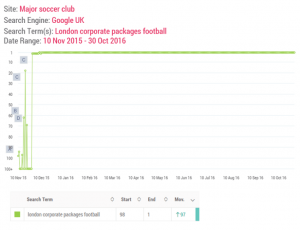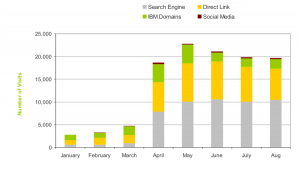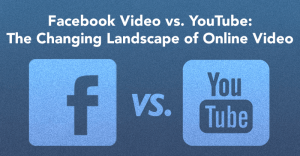Rather than shying away from modeled attribution, marketers should look to further understand and wholeheartedly embrace it.
In the current privacy-centric environment, traditional methods of marketing and analytics measurement are no longer viable. So the urgent question is, what are the key next steps brands should take to be able to effectively measure their marketing activity?
Across the industry, there is no shortage of different initiatives and solutions attempting to tackle this — from the Privacy Sandbox to data clean rooms to the Unified ID 2.0. Wading through the details of these solutions, it is understandable that any marketer will end up being overwhelmed by the various options.
So, rather than worry about what you should do in reaction to something like Google Topics (short answer: not much until Google runs more concrete tests and provides evidence that it’s fully privacy compliant), there are two specific areas in which all brands should be focusing on in the immediate future.
The big tech platforms’ move to modeled data
User-level measurement has always been the North Star for brands. In a perfect world, it enables us to most accurately understand the impact of marketing campaigns to make effective optimization and budgeting decisions.
However, in a privacy-centric era, platforms such as Google and Meta have implemented various enhancements to preserve user-level measurement as much as possible. This includes Enhanced Conversions and the Conversions API, each enabling conversions to be more accurately attributed to your marketing campaigns.
Both features should be front of mind. That said, this will only cover a portion of your missing data and is where something like Google’s Consent Mode comes in. This leverages modeling techniques to account for users opting out of marketing/ analytics consent.
There may be some skepticism about relying on modeled data within your reports. However, it is important to note that this isn’t anything new.
In fact, modeled conversions have been in place within tools like Google Ads and Facebook Ads Manager for many years. The requirement for modeling will only increase as known-user datasets continue to decrease.
Although the big vendors predictably don’t make it very easy, with the right expert support, it is possible to compare what your unmodelled vs. modeled results look like. This will enable you to make more informed decisions about the numbers you report and their relative degree of accuracy.
Rather than shying away from modeling, marketers should look to further understand and wholeheartedly embrace it.
Econometrics + attribution = modeled attribution
Attribution has been an eternal debate in marketing and was already challenging enough. All the more when we think about how to navigate the numerous walled gardens and privacy restrictions.
Given the inevitable gaps in known data, a user-level attribution model is now very difficult — unless you are looking at a specific subset of channels that don’t cross walled gardens. Otherwise creating a robust cross-channel custom user attribution solution is now nigh on impossible.
Yet, every business will still need marketers to accurately measure the performance of their media mix and make effective budgetary decisions. Intriguingly, the optimal next-gen solution is actually a combination of two historical approaches.
Full-funnel view of marketing performance
Modeled attribution takes the best parts of MMM (media mix modeling) and MTA (multi-touch attribution) to give you a full-funnel view of marketing performance whilst being completely privacy-resilient.
The foundation of modeled attribution is based on MMM, which uses aggregate-level datasets rather than user-level inputs (i.e., cookie data). This means it does not need to be concerned with MTA considerations, like user consent or how to navigate walled gardens.
An additional advantage of modeled attribution is that by using a regression-based approach, it is far easier to incorporate all your marketing channels into your model without having to track everything within a single solution.
You also have the ability to include external factors such as seasonality, stock levels or competitor activity to increase the accuracy of your model and isolate the specific impact of your media campaigns.
A new granular approach
The historical drawback of MMM was that the outputs were at a very low level of granularity (e.g., TV vs. digital vs. print) and that results were only available every six months.
However, modeled attribution can leverage direct connections to each of your marketing platforms to pull in daily inputs at the most granular level. This makes it far more actionable for tactical planning and budget decisions.
While the initial setup requires precise planning and expertise, modeled attribution looks to provide all the detail you are used to with MTA while future-proofing yourself against further industry changes — which is all enabled through the power of modeling.
So it turns out that the answer to our uncertain future was something that was in front of us all along. In many ways, we are going back to the future with our measurement strategies.
The post Modeled behavior: A future-proofed new measurement strategy appeared first on MarTech.
MarTech(25)
Report Post








